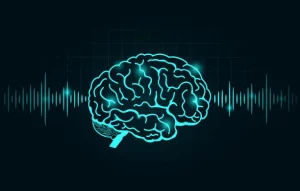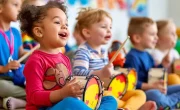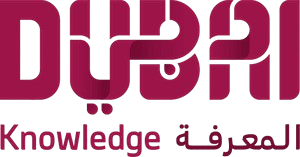Why Musical Activities For Child Development Are Vital for Your Child’s Brain Development
At Tickle Right, we believe that learning should stimulate every part of a child’s brain. Among the many powerful tools for holistic development, musical activities for child development stand out as one of the most scientifically validated methods. Music doesn’t merely entertain; it actively shapes young brains, influences emotional growth, and supports a wide array of cognitive and motor skills. In this detailed article, we’ll explore how musical activities for child development play a crucial role in nurturing young minds.
How Music Stimulates Brain Development
When children engage in musical activities for child development, their brains are actively processing complex inputs. Unlike many other activities, music stimulates multiple brain areas at once, including the auditory, motor, language, memory, and emotional centers. This multi-regional engagement strengthens neural connections and supports whole-brain development.
Studies have shown that listening to and participating in music stimulates both the left (logical) and right (creative) hemispheres of the brain. This bilateral stimulation helps children build balanced brain functions. At Tickle Right, our brain development program incorporates music precisely because of its unique ability to engage both analytical and creative faculties simultaneously.
Each note, rhythm, and melody strengthens neural pathways. The repeated exposure to musical patterns enhances auditory processing, pattern recognition, and sensory integration — skills that are critical for academic and social success later in life. This is why musical activities for child development hold such a prominent place in our curriculum.

Cognitive Benefits Of Musical Activities
The cognitive advantages of musical activities for child development are profound. Music enhances memory, attention, and concentration by requiring children to follow melodies, recall lyrics, and stay attuned to rhythms. These activities exercise working memory and attention control, which are fundamental for academic learning.
For young children, especially musical activities for toddlers, the benefits extend into language acquisition. Singing introduces them to new vocabulary, sounds, and sentence structures, strengthening phonological awareness. The rhythmic nature of music also reinforces auditory discrimination — the ability to hear and differentiate between sounds — which is a crucial skill for reading and language development.
Additionally, music nurtures problem-solving and reasoning skills. When children anticipate patterns, create melodies, or improvise rhythms, they are practicing abstract thinking. At Tickle Right, we integrate these music activities for preschoolers into our sessions to ensure children naturally develop problem-solving capabilities while enjoying the process.
Emotional And Social Benefits Of Music
Beyond cognitive gains, musical activities for child development play a significant role in emotional growth. Music gives children a safe, accessible way to recognize and express emotions. Different tempos, melodies, and harmonies evoke various feelings, helping children become more attuned to their own emotional states.
Empathy and emotional intelligence are fostered as children identify the feelings conveyed in music and observe the emotions of others participating in group musical experiences. Group activities such as singing circles, rhythm games, or instrument ensembles promote social bonding, cooperation, and teamwork.
Music And Motor Skill Development
The connection between musical activities for child development and motor skills is equally significant. Playing instruments, clapping along to rhythms, and moving to music refine both fine and gross motor coordination. Fine motor control is strengthened as children play simple percussion instruments, tap the drums, or handle small musical props.
Gross motor skills develop as children dance, march, or sway to music. These large movement activities promote body awareness, balance, and spatial orientation. Rhythmic movement activities, such as freeze dances or coordinated group routines, are particularly effective for young children.The multisensory nature of musical activities for toddlers ensures that development happens holistically, rather than in isolated skill areas.
Simple Musical Activities Parents Can Do At Home
Parents play a vital role in extending the benefits of musical activities for child development into daily life. Here are some enriching musical activities for toddlers and music activities for preschoolers that integrate music without requiring special equipment or training:
1. Sing-Alongs and Lullabies
Singing familiar songs together strengthens bonding while exposing children to rhythm, melody, and language patterns. Repeating lullabies nightly creates comforting routines while supporting auditory development.
2. Rhythm Clapping Games
Simple call-and-response clapping patterns improve listening and imitation skills. As your child advances, try layering more complex rhythms to challenge their attention and coordination.
3. DIY Musical Instruments
Encourage creativity by making simple instruments using household items — shakers from rice-filled bottles, drums from pots and pans, or rubber band guitars. These activities combine hands-on crafting with musical exploration, enhancing fine motor skills.
4. Movement to Music / Dance Parties
Turn on music and have impromptu dance sessions. Use varying tempos and genres to challenge your child’s ability to move rhythmically. Movement-based music activities for preschoolers, like freeze dancing or musical chairs, promote gross motor development while keeping children engaged.
At Tickle Right, we encourage parents to view these musical moments not just as playtime but as opportunities for meaningful brain stimulation.
How To Use Music For Child Development Effectively
Many parents wonder how to use music for child development in a structured yet enjoyable way. The key lies in consistency, variety, and active participation. Rather than playing passive background music, involve your child actively — let them sing, move, clap, and create sounds.
Parents can also observe their child’s natural preferences — some may gravitate toward rhythmic drumming, while others enjoy melodic singing or expressive dancing. Tailoring musical activities to your child’s interests strengthens engagement and maximizes the positive effects of musical activities for child development.
Make Music Part Of Your Child’s Daily Routine
Consistent exposure to musical activities for child development lays the groundwork for stronger neural pathways that support lifelong learning. When children regularly engage in musical play — both at Tickle Right and home — they experience accelerated cognitive, emotional, social, and motor development.
Music is at the core of our holistic brain development program, and we use it as a powerful tool to stimulate multiple brain regions simultaneously. By integrating musical activities for toddlers, age-appropriate music activities for preschoolers, and collaborative group experiences, we help children build essential life skills with joy and confidence.
Join us at a Tickle Right centre near you for a free orientation to know how music and our additional interactive activities can transform your child’s brain development journey.



